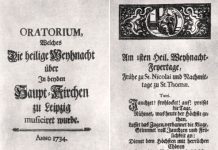The Bishop of Boise, Idaho, Peter F. Christensen, has specifically forbidden his priests, even in their ultra-private Masses now mandated, from celebrating ‘ad orientem’. We’ve got to stop all those young rebels, it seems, reverting back to retrograde eras of yesteryear.
His Excellency states that this is mandated by the new (2011) General Introduction to the Roman Missal (GIRM), and has been of great spiritual value to the people. And speaking of yesteryear, Here are his own words, which signify he seems liturgically stuck in an era when Stayin’ Alive was just a disco song, and not a motto for a pandemic:
There are priests who prefer ad orientem. I am convinced that they mean well and find it a devout way to pray. But the overwhelming experience worldwide after Vatican II is that the priest faces the people for Mass and this has contributed to the sanctification of the people
One has to wonder what His Excellency might mean, and what evidence may be adduced. Sanctification, as churches empty, belief in the Real Presence is vanishing, and who’s left becomes ever-more grey.
Whatever happens to the Novus Ordo – whether it should (I will leave aside for now whether it could) be reformed and brought more into line with the usus antiquior, which seems to be the mind of the Council, and of Josef Ratzinger, but not so much of Bishop Christensen – we may wonder whether this marks the beginning of the end of the new Mass as we know it, that is, as it has been celebrated up to now, with few vestigial marks of the Eternal Sacrifice of all time.
Providentially, I have an article on this topic soon to be published in Crisis magazine. For now, here is a response on whether ‘facing the people’ is in fact mandated by the new GIRM (with a couple of typos corrected). A portion of the thread follows:
The English copy of the GIRM has a mistranslation on 299
Altare maius exstruatur a pariete seiunctum, ut facile circumiri et in eo celebratio versus populum peragi possit, quod expedit ubicumque possibile sit.
The correct translation would be more along the lines of:
The main altar should be built separated from the wall, which is useful wherever it is possible, so that it can be easily walked around and a celebration toward the people can be carried out
The qualifier ‘quod’ refers to the main clause, in that the altar should be separate from the wall whenever possible, NOT that the priest should face the people whenever possible.
The CDWDS has since issued a clarification.
adoremus.org/12-0101cdw-adorient.html
In summary, as you may read, there is not, and never was, any command or prescription to say Mass ‘facing the people’, even if this has become the custom, and is suggested in the GIRM. In fact, the first edition of the GIRM in 1974 assumed the priest said Mass, as ancient tradition has it back to the earlies days of the Church, ‘cum populo’ and ‘ad orientem’, with instructions to face the people at certain points (as is still the case in the usus antiquior).
The new custom – and it is new, as Louis Bouyer meticulously proved – of facing the people obscures what the Mass really is, in its deepest reality, the Sacrifice of Christ, offered to God the Father, on behalf of the people. And the priest facing the people leads, imperceptibly, even unwittingly, to all sorts of liturgical abnormalities, as well as distracting him from his primary task of acting as the one offering this sacrifice.
We can only hope that all the priests now saying the most private of private Masses may realize this, and turn themselves around to lead us in prayer, when the populi return again.











